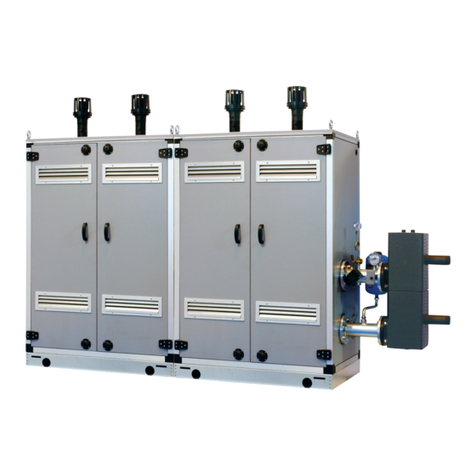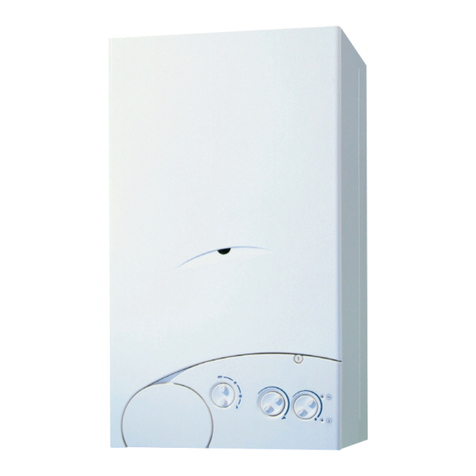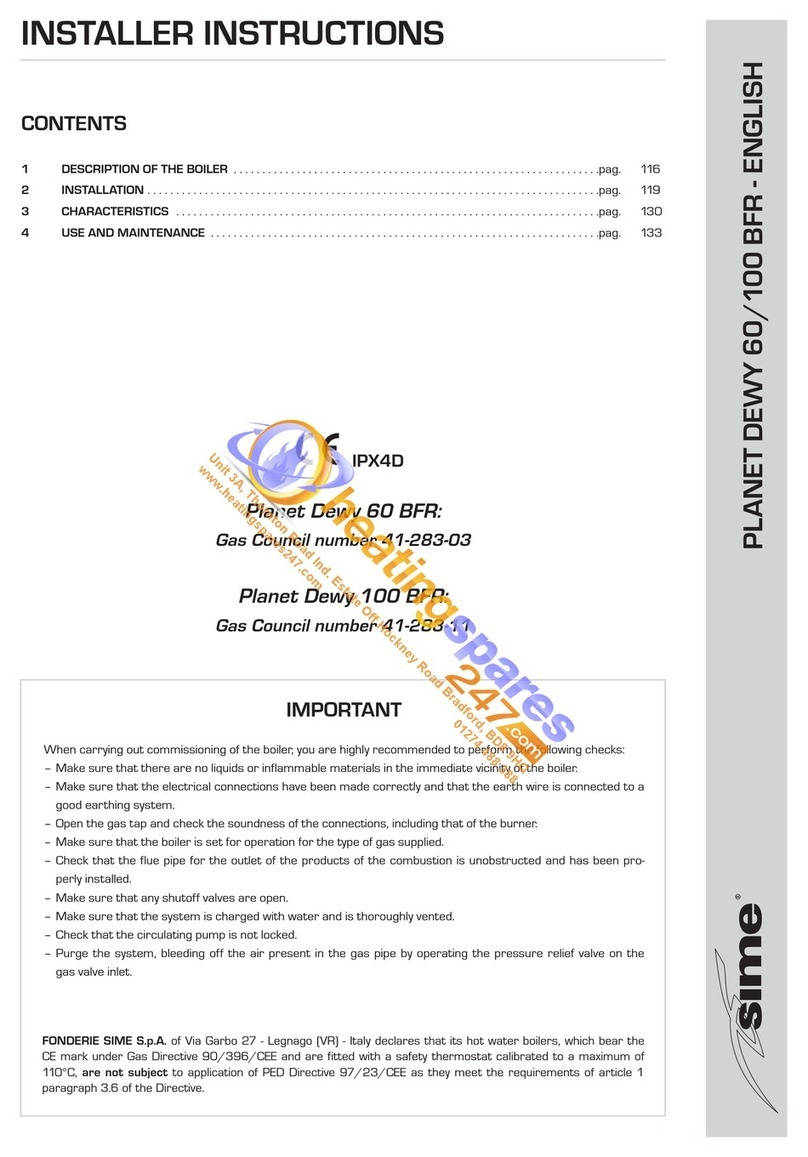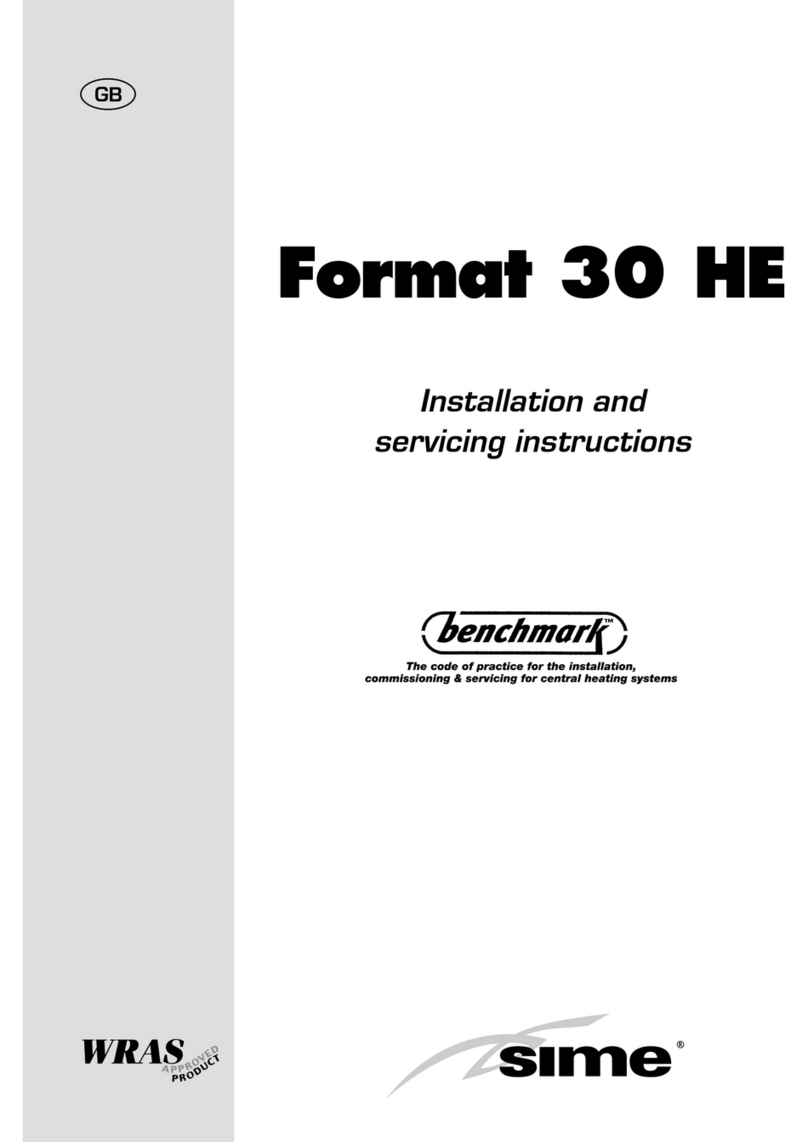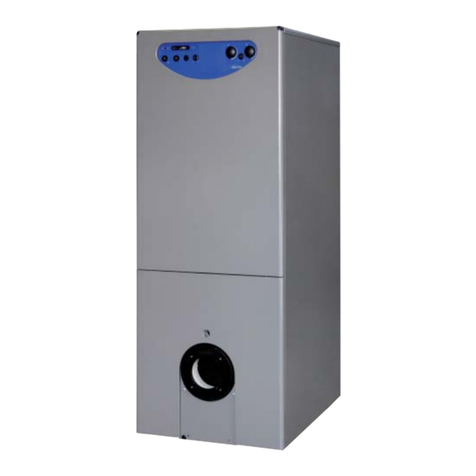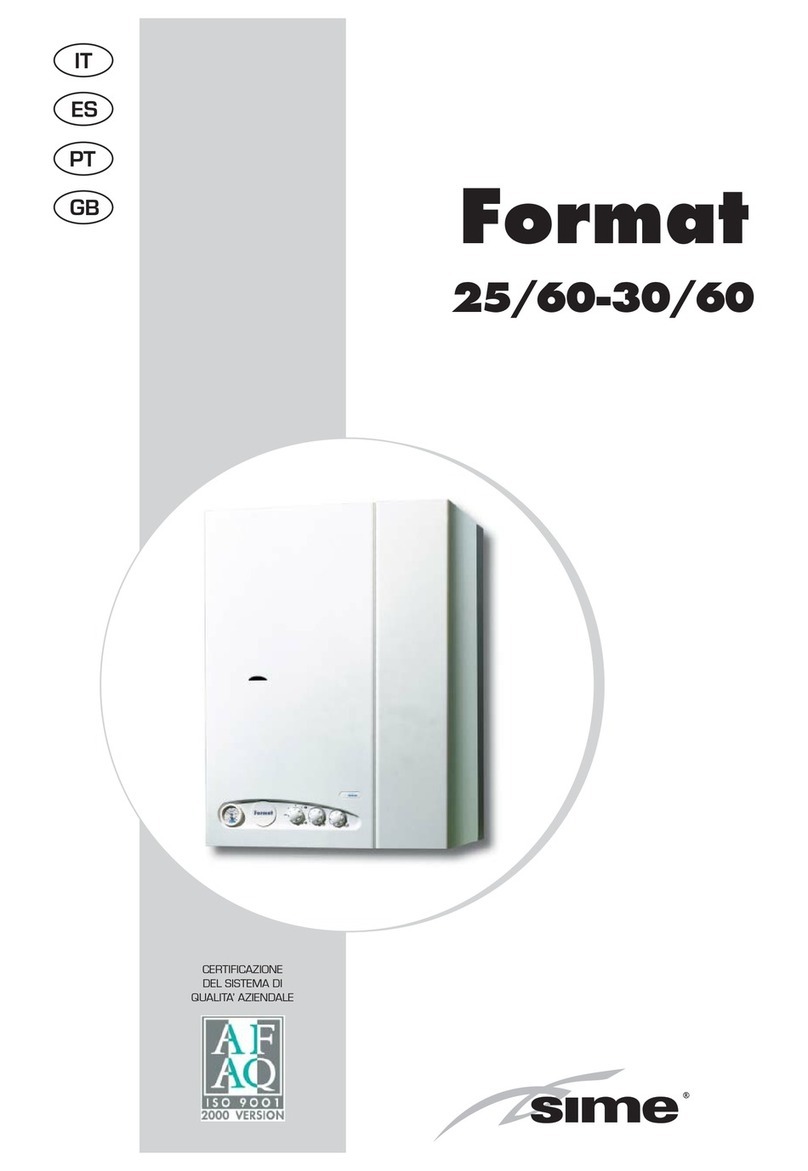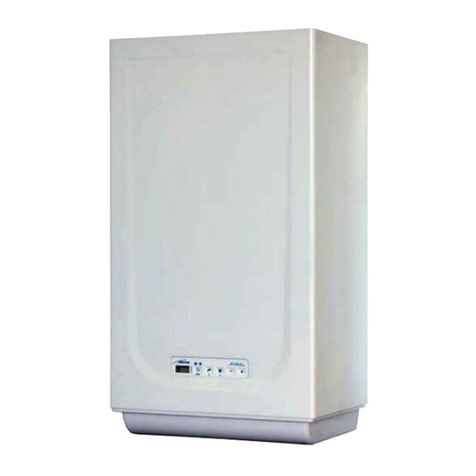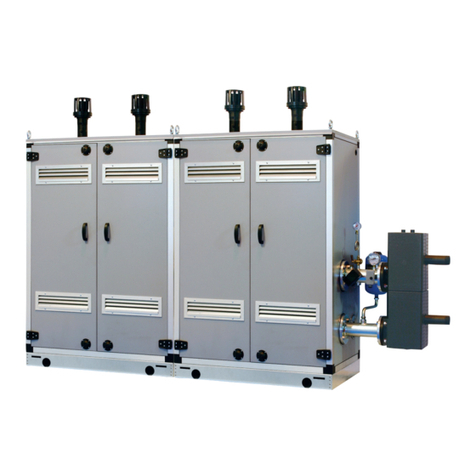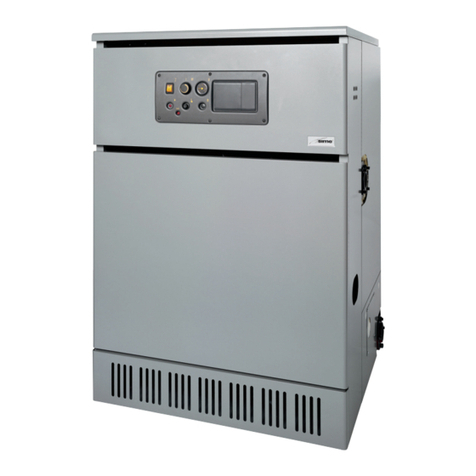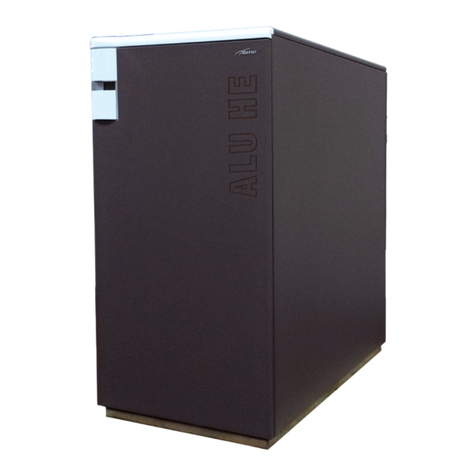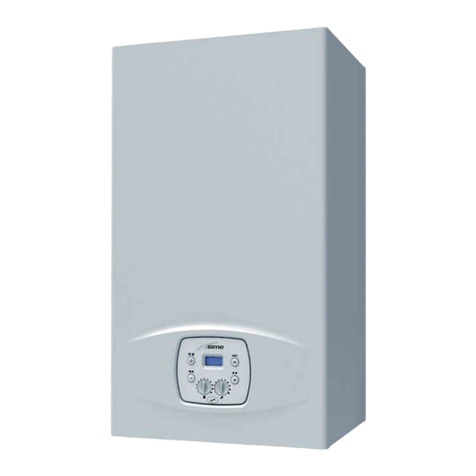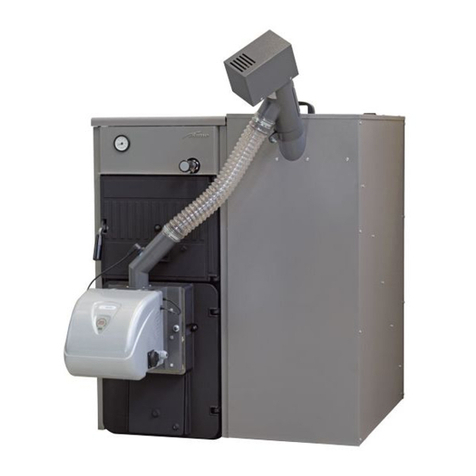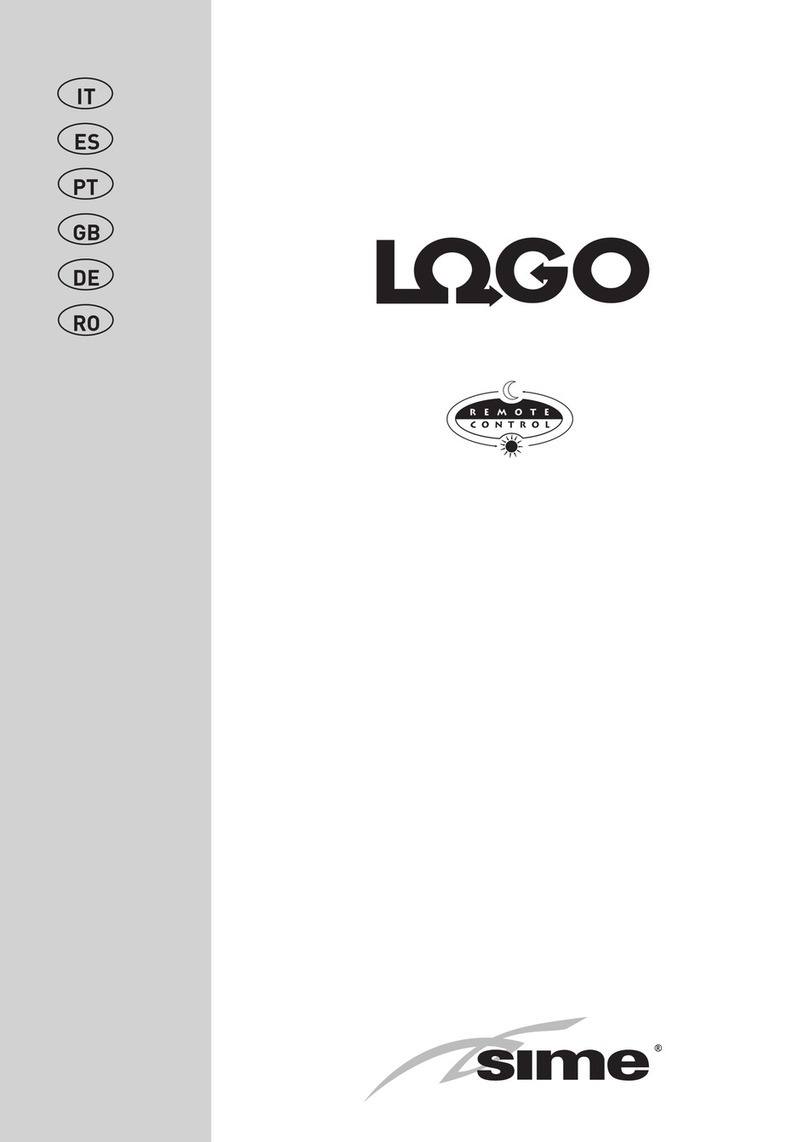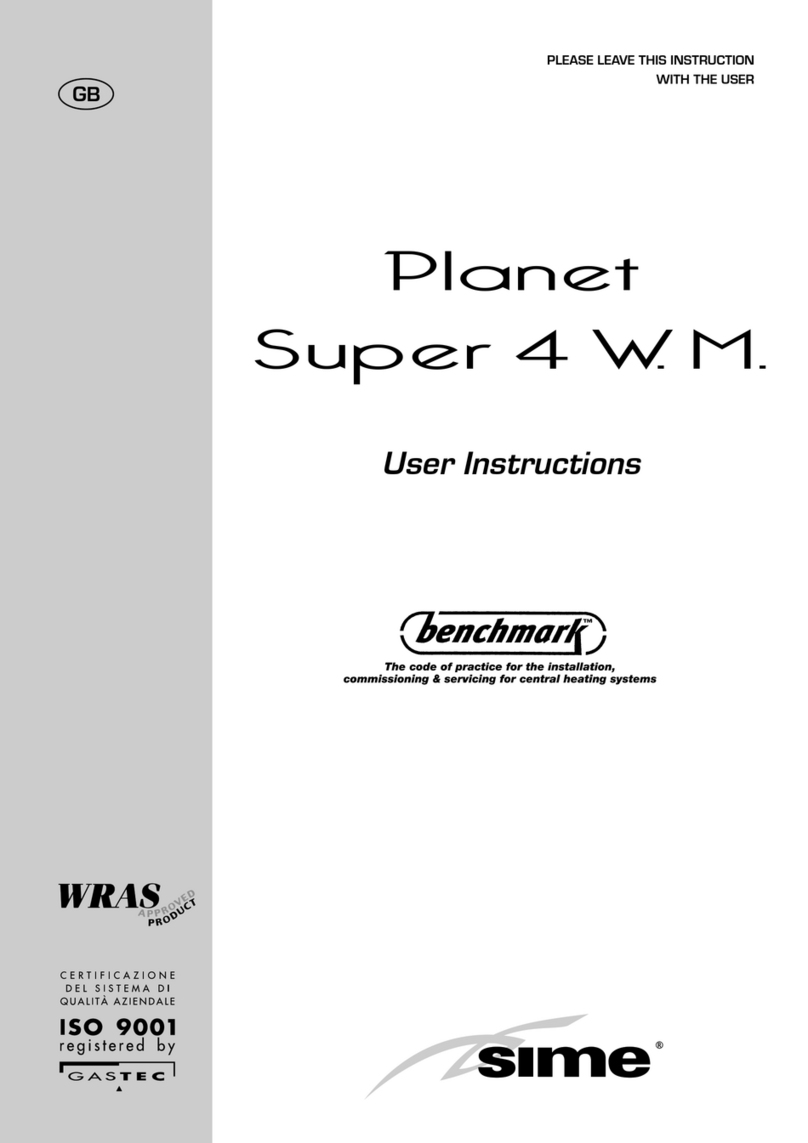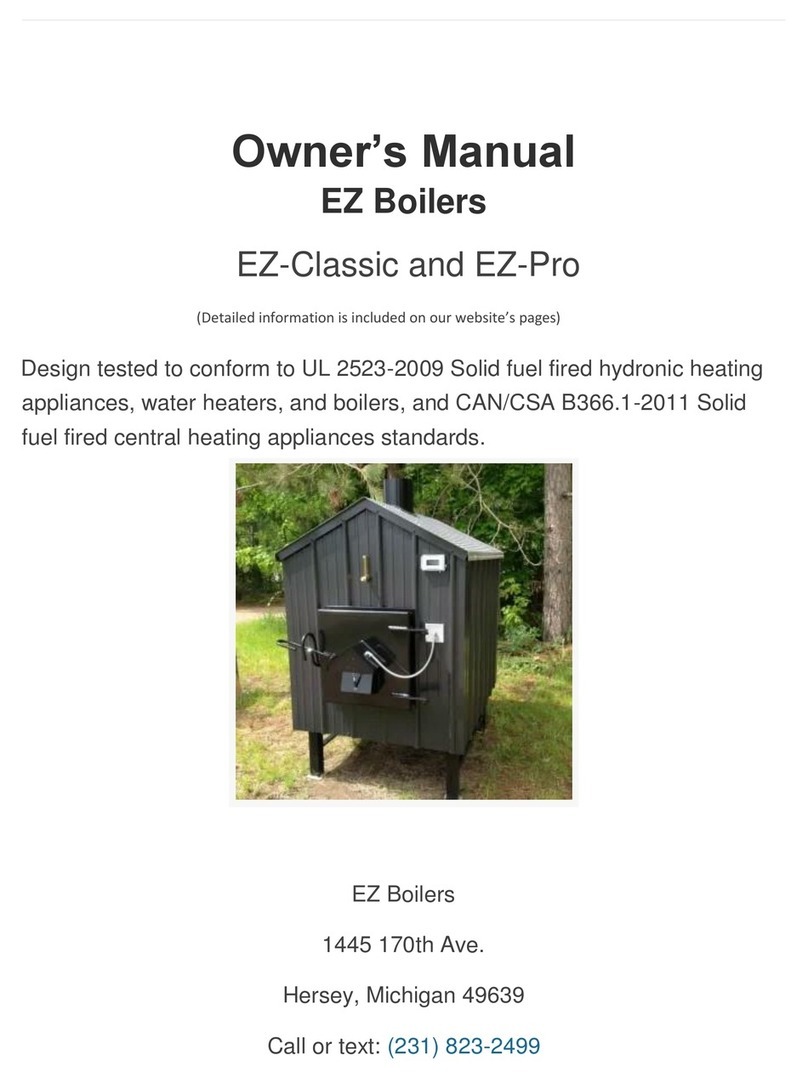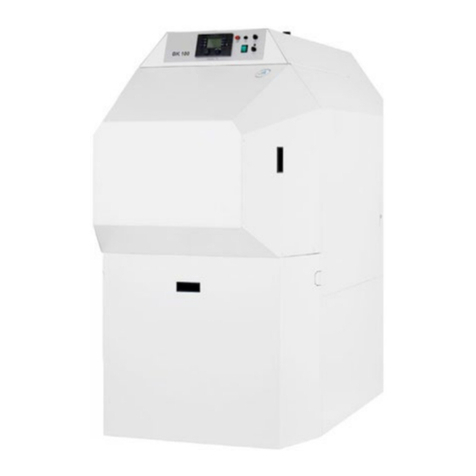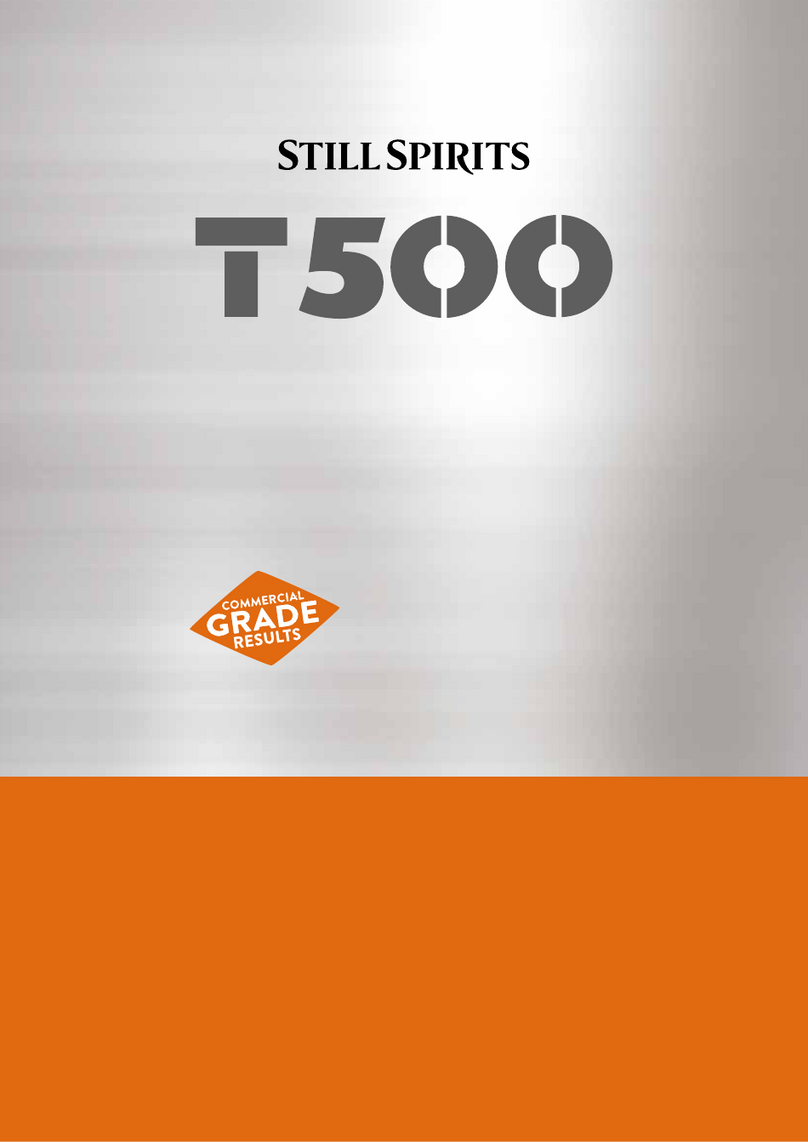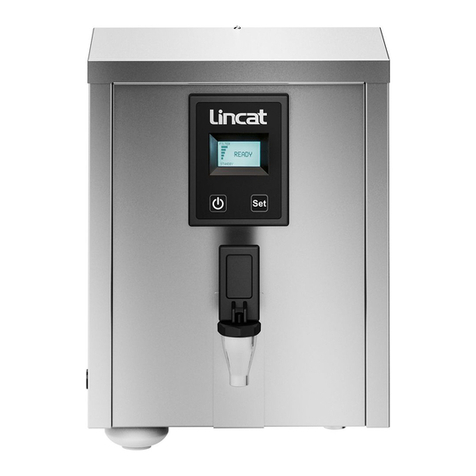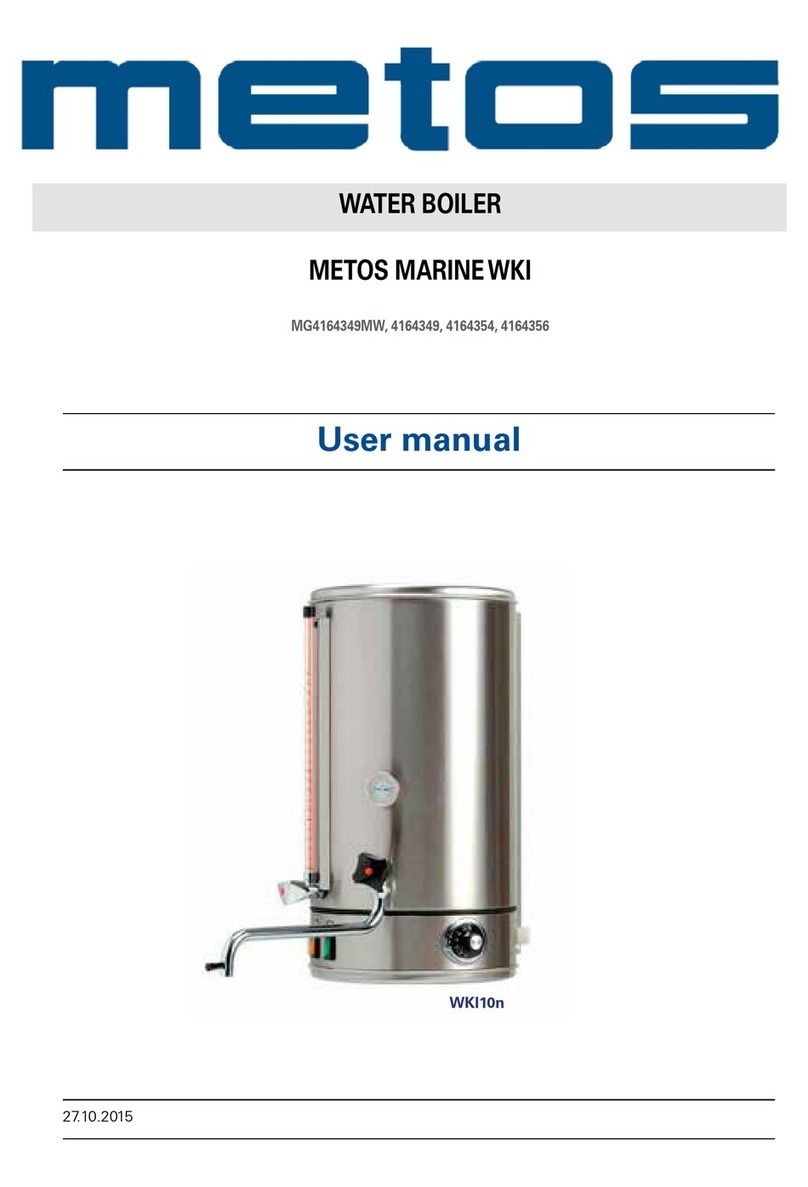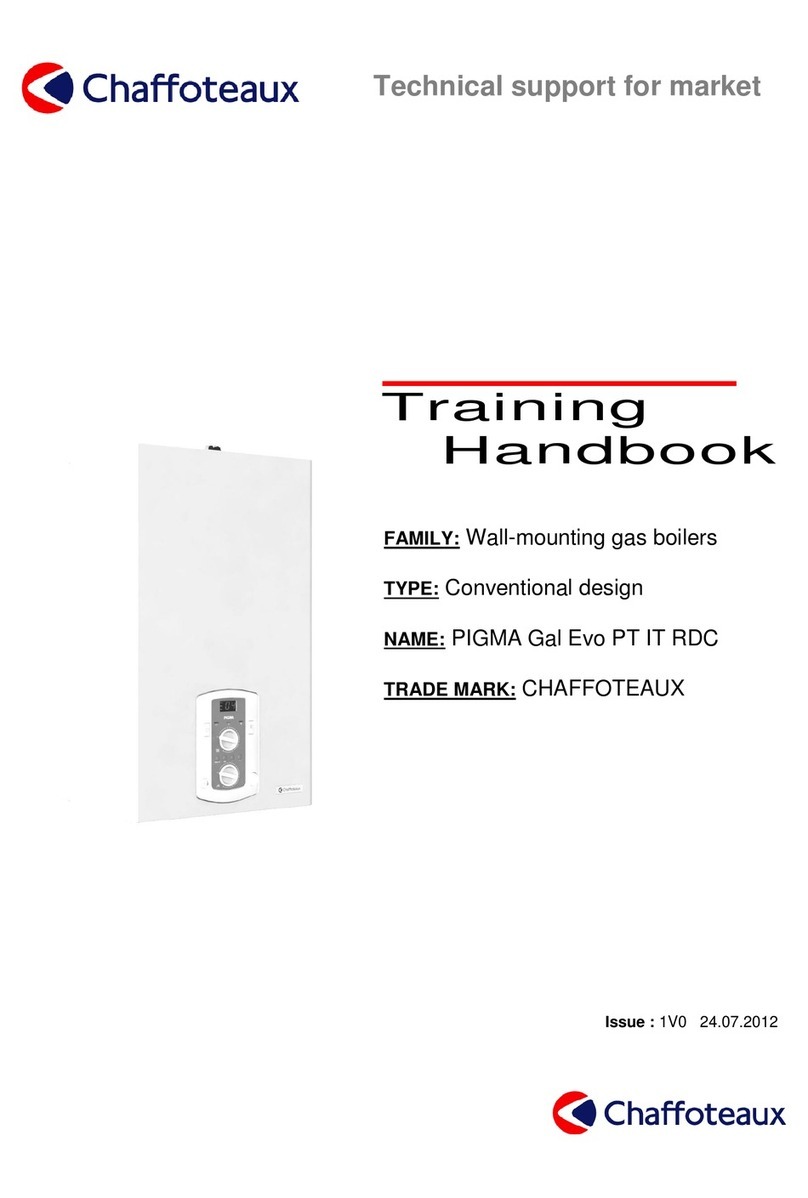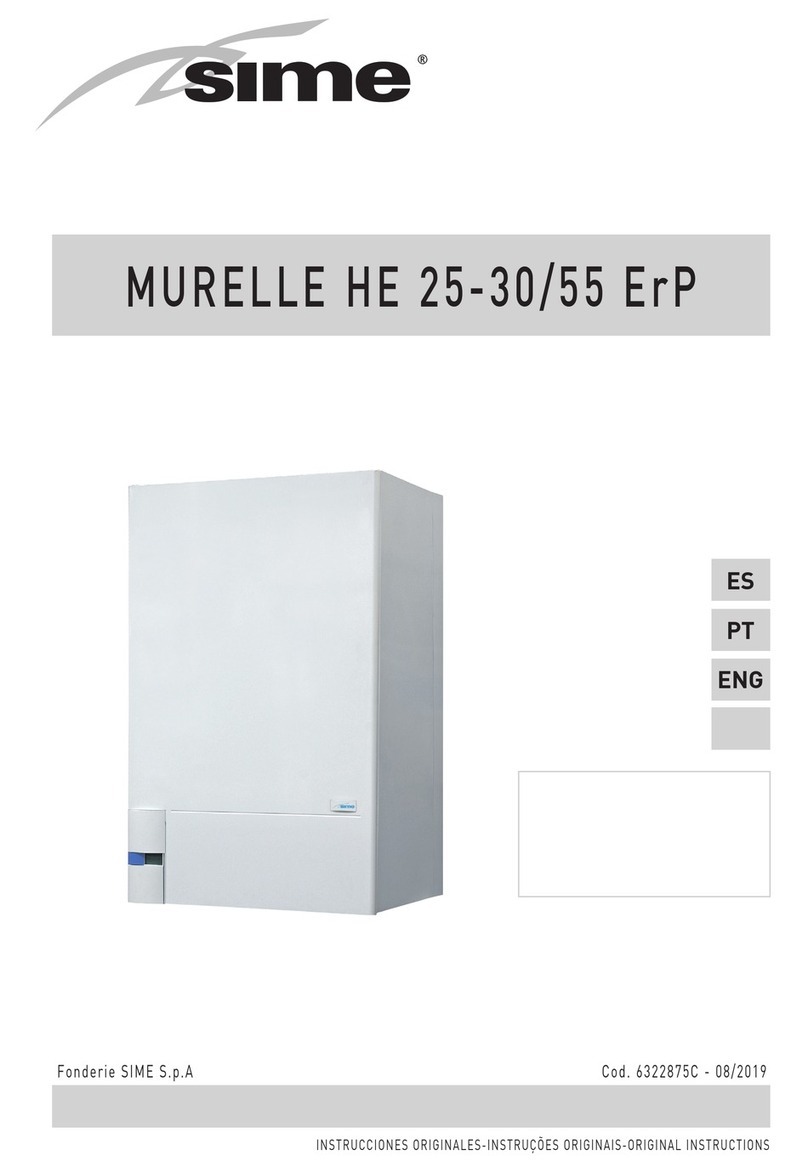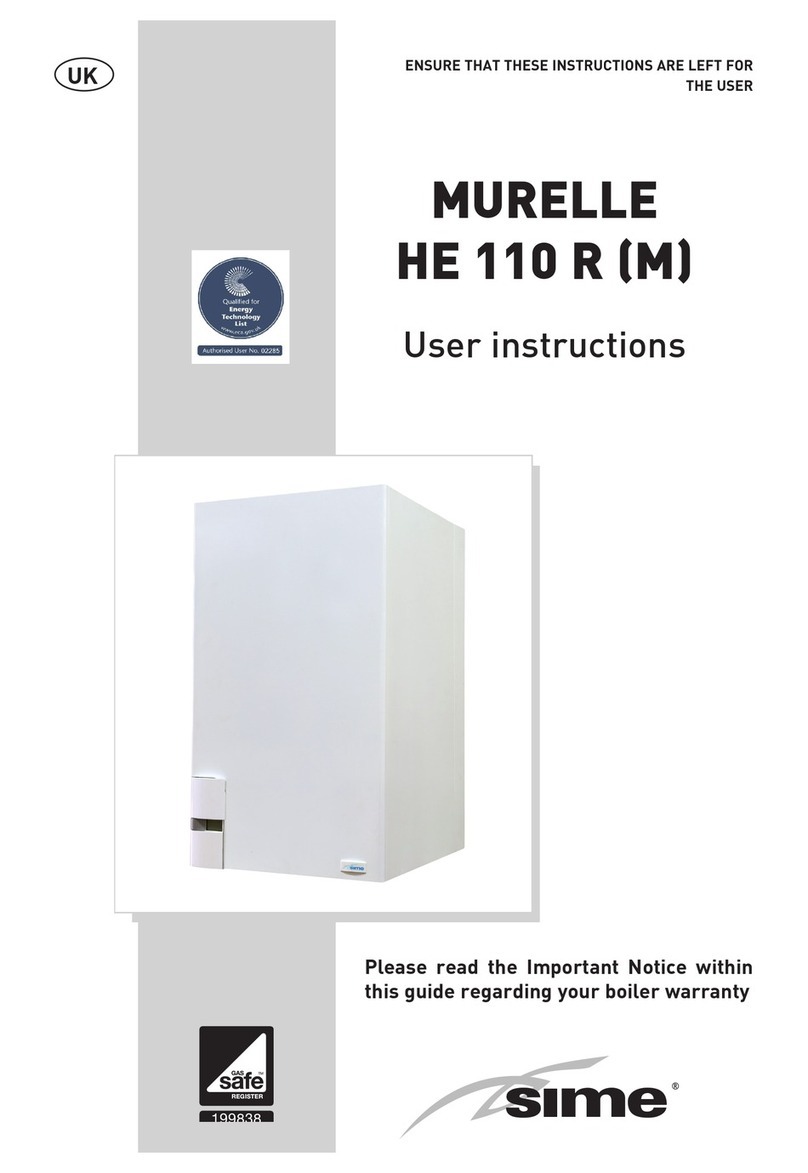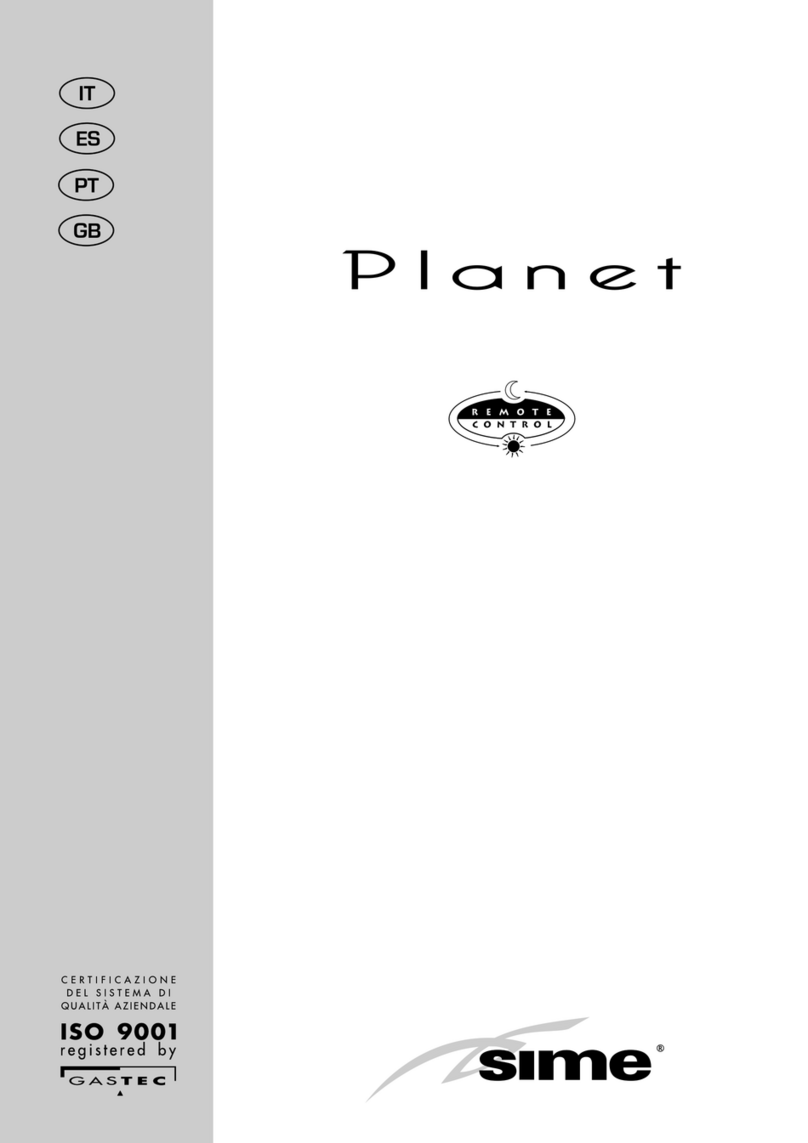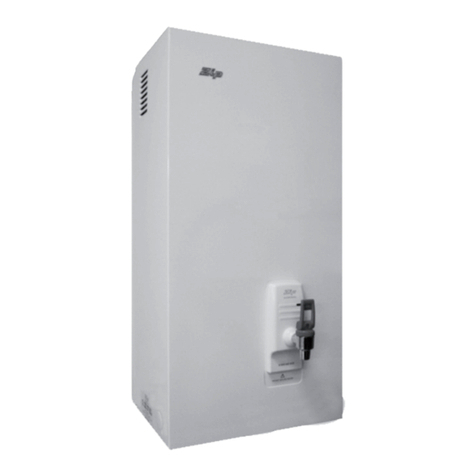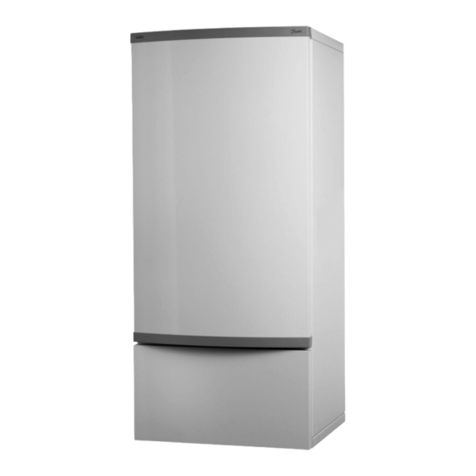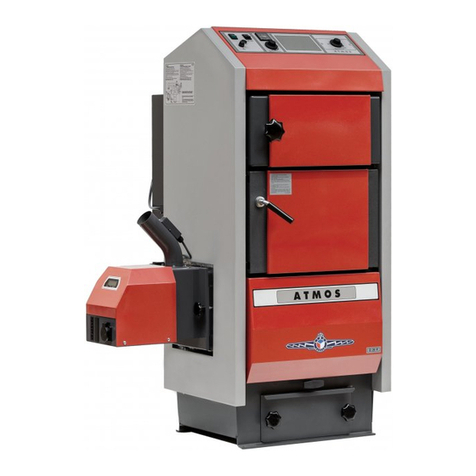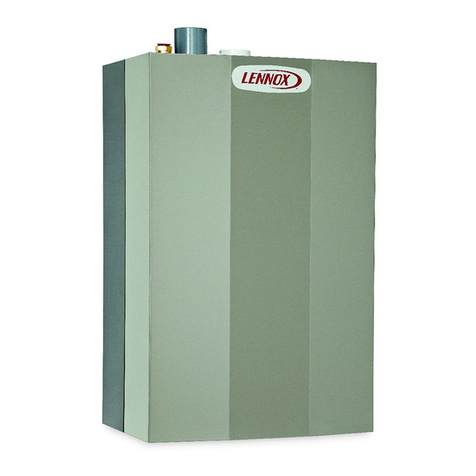
13
2.2.6 Fault / malfunction codes
Every boiler in the cascade manages
its own faults as described in “Fault /
malfunction codes”.
The faults that generate a lockout in a
specific boiler are reset by pressing the
RESET button on the relevant boiler.
A lockout in the master boiler is reset
either by pressing the RESET button or
from a remote device.
For the master and slave no. 1 boilers,
specific faults can be checked for as
shown in the table:
Type No. Description
ALL 31 Cascade delivery probe
(SMC) fault
ALL 35 Communication fault
with RS485 boards
ALL 36
Number of boilers
connected in cascade
fault
ALL 70 Cascade stop general
fault
ALL 71 General fault with a
boiler in the cascade
2.2.7 Anti-freeze function
The boilers are equipped with anti-freeze
function which activates the pumps and
the burner when the temperature of the
water contained inside the appliance drops
to below 6°C. The anti-freeze function is
ensured, however, only if:
- the boiler is correctly connected to the
gas and electricity supply circuits;
- the boiler is constantly fed;
- the boiler ignition is not blocked;
- the essential components of the boiler
are all in working order.cIn these
conditions the boiler is protected
against frost down to an environmental
temperature of -5°C.
ATTENTION: In the case of installation
in a place where the temperature drops
below 0°C, the connection pipes must be
protected
2.3 CONNECTING UP SYSTEM
To protect the heat exchanger becoming
damaged by corrosion, incrustation or
deposits, after installation it is extremely
important to clean the system using
suitable products. Sime recommend the
use of FERNOX products for the flushing
and final treatment of the system water.
this is particularly important in hard water
areas.
Artificially softened water must not be
used to fill the heating system.
It is important to check the concentration
of the inhibitor after each system
modification and during maintenance,
following the product manufacturers
instructions(specific test kits are available).
A suitable connection must be made to
the safety valve, extending it to a safe
termination, incorporating a tun dish if
required.
Isolation valves must be incorporated in
the heating flow and return, to enable
boiler maintenance or repair without the
need to drain the entire heating system.
WARNING:
Failure to clean , or adequately treat the
heating system could invalidate the boiler
warranty.
Gas connections must be made in
accordance with current standards and
regulations.
When dimensioning gas pipes from the
meter to the module, both capacity volume
(consumption) in m3/h and gas density
must be taken into account.
The sections of the piping making up the
system must be such as to guarantee
a supply of gas sufficient to cover the
maximum demand, limiting pressure loss
between the gas meter and any apparatus
being used to not greater than:
- 1.0 mbar for family II gases (natural
gas);
- 2.0 mbar for family III gases (butane or
propane).
An adhesive data plate is positioned inside
the front panel; it contains all the technical
data identifying the boiler and the type of
gas for which the boiler is arranged.
2.3.1 Connection of condensation water
trap
To ensure safe disposal of the condensate
produced by the flue gases, reference
should be made to BS6798:2009.
The boiler incorporates a condensate trap
which has a seal of 75mm, therefore no
additional trap is required. The condensate
should ideally be discharged internally into
an internal waste pipe(washing machine/
sink waste) or a soil pipe to avoid the risk
of freezing. External pipe runs should
be avoided, but if it is necessary, the
pipework should be at least 32 mm and
protected from the risc of freezing with
a waterproof insulation and the length
kept to a minimum and not exceeding 3
m. termination should be into an external
gully or purpose made soakaway. We
recommend that the condensate drain at
the boiler is in 20 mm solvent weld pipe
with a socket covering the connection to
the trap. Alternatively a suitable hose can
be secured to the trap and terminated as
required (see Appendix 1- Dealing with
condensate).
NOTE: All pipework must have a
continuous fall from the boiler and must
be resistant to corrosion by condensate,
copper or steel is NOT suitable. It
should be noted that the connection of a
condensate pipe to a drain may be subject
to local building control requirements.
2.3.2 Filter on the gas pipe
The gas valve is supplied ex factory with an
inlet filter, which, however, is not adequate
to entrap all the impurities in the gas or in
gas main pipes.
To prevent malfunctioning of the valve, or
in certain cases even to cut out the safety
device with which the valve is equipped,
install an adequate filter on the gas pipe.
2.4 INITIAL PHASE SYSTEM FILLING
fig. 5
Cold system filling pressure must be
beetween
1
and
1.5
bar. The system must
be filled slowly so that air is released
through the specific escapes.
2.4.1 System draining (fig. 5)
To drain the system, turn off the boiler ,
isolate the flow and return, and use the
boiler drain vent (7 fig. 5).
2.4.2 Dealing with condensate
See Appendix 1”Dealing with condensate”.
2.4.3 Requirements for sealed water
systems MURELLE HE 35 R ErP
(fig. 5/b)
The heating system design should be
based on the following information:
a) The available pump head is given in
fig. 14.
b) A filling device as shown in fig 5/b
must be incorporated.
2.5 EXHAUST
The boiler is supplied with a 80 mm gasket,
which must be fitted over the exhaust
terminal prior to the flue being installed
(11 fig. 6 - fig. 7 - fig. 8 ).
See fig 8a for examples of suitable flue
termination positions.






















